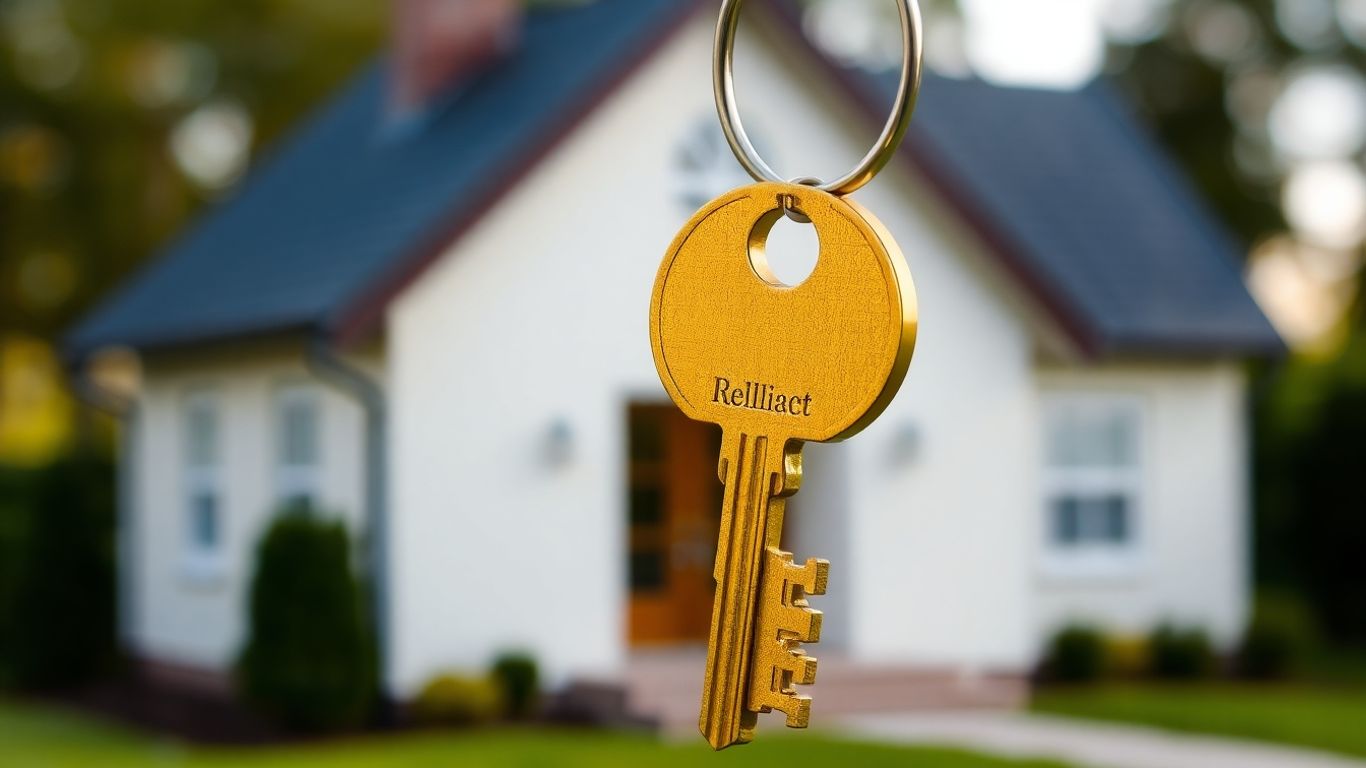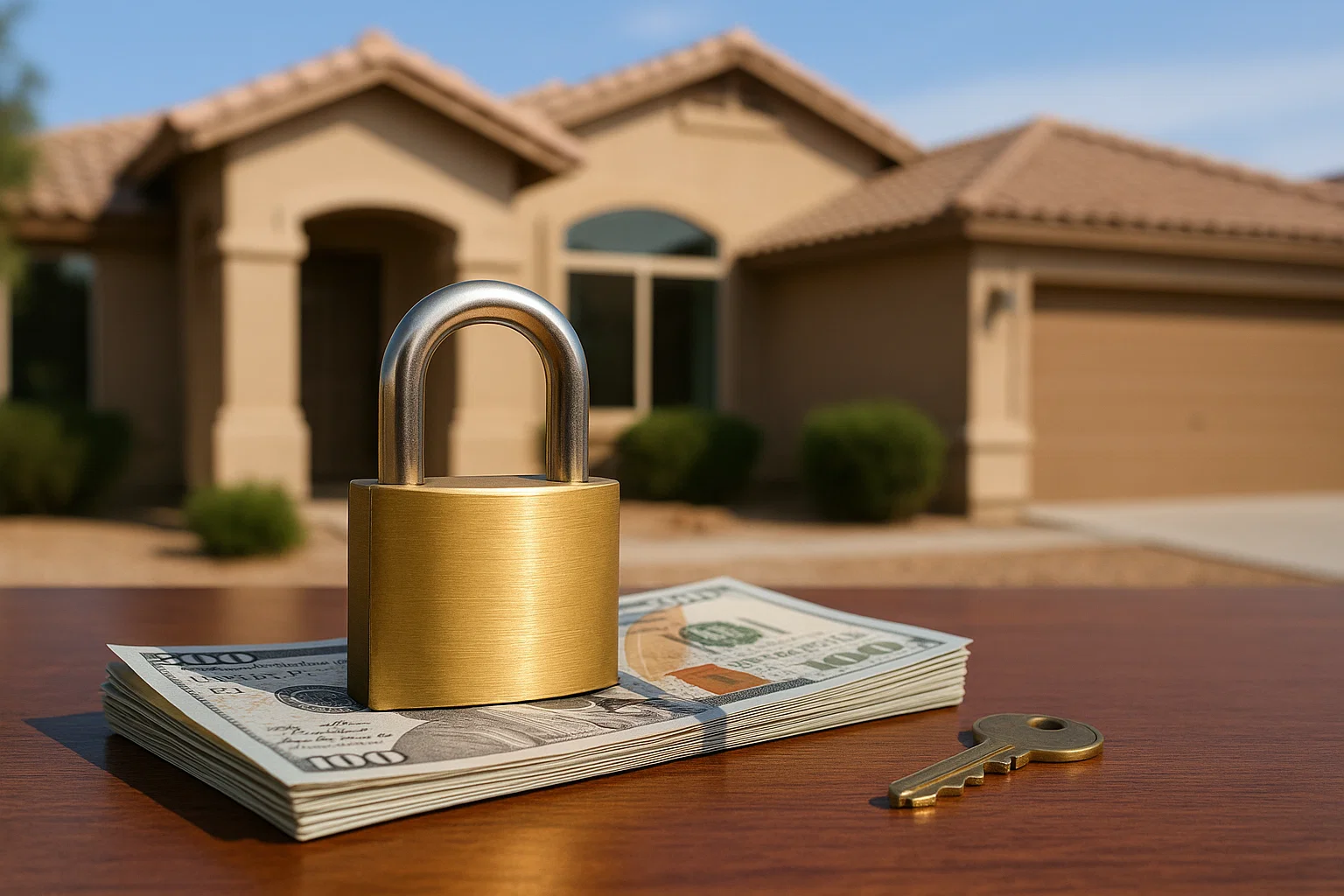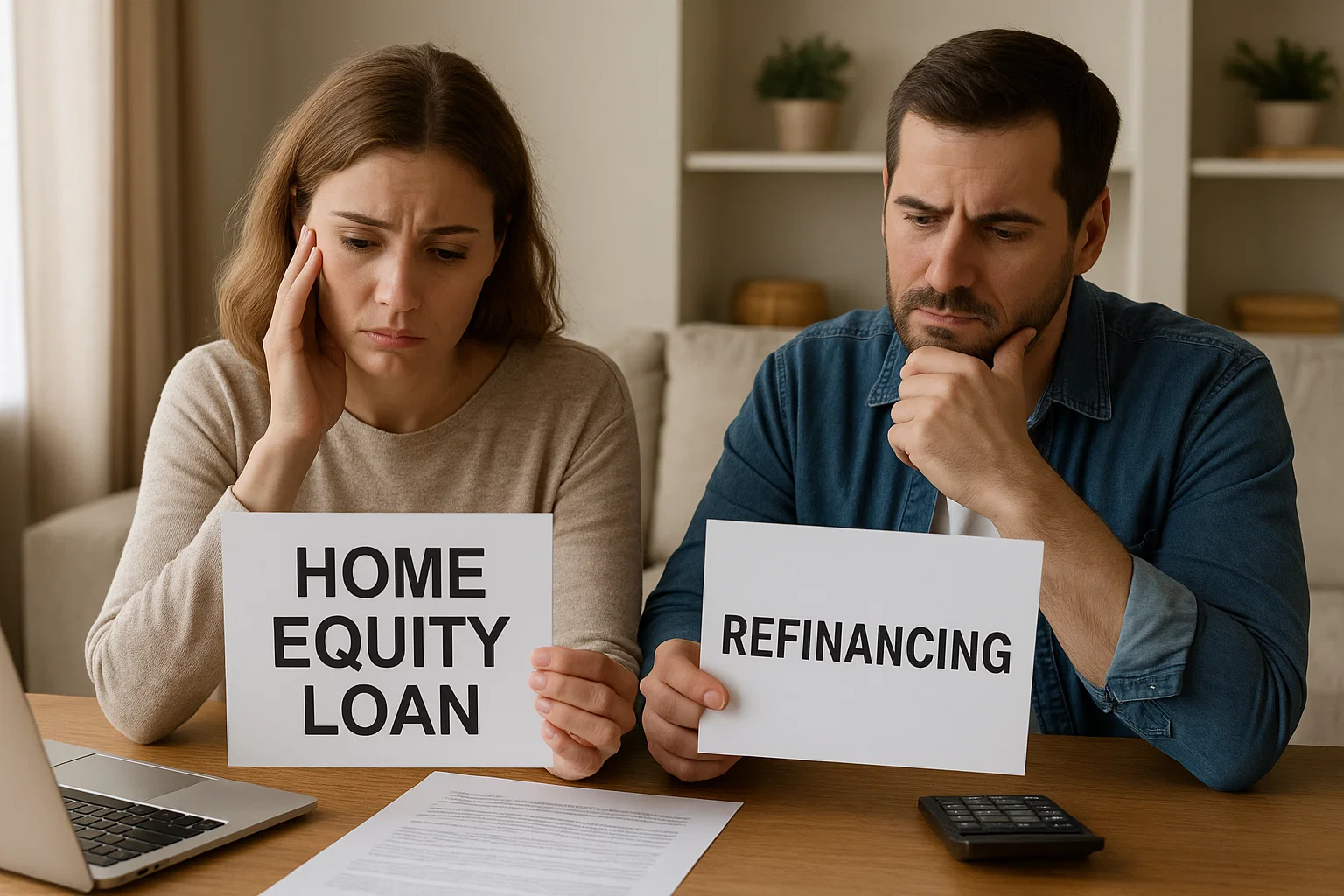Can You Refinance a Fixed-Rate Mortgage? Exploring Your Options
November 19, 2025
Can you refinance a fixed-rate mortgage? Learn about the process, benefits, costs, and alternatives to refinancing your fixed-rate home loan.

So, you've got a fixed-rate mortgage and you're wondering if you can change it up. It's a common question, and the short answer is yes, you absolutely can refinance a fixed-rate mortgage. Think of it like swapping out your current loan for a new one, potentially with better terms that could save you money. We'll break down what that means, why you might want to do it, and what you need to know before you jump in.
Key Takeaways
- Yes, you can refinance a fixed-rate mortgage to get a new loan with potentially better terms.
- Refinancing can help lower your interest rate, reduce monthly payments, or shorten your loan term.
- Consider refinancing when market interest rates drop significantly below your current rate.
- Be aware of upfront costs like closing fees, appraisal fees, and potential prepayment penalties.
- Evaluate your financial goals and how long you plan to stay in your home to determine if refinancing makes sense.
Understanding Fixed-Rate Mortgages and Refinancing
What Is a Fixed-Rate Mortgage?
A fixed-rate mortgage is pretty straightforward. It's a home loan where the interest rate you agree to at the start stays the same for the entire time you have the loan. Think of it like a set price for your money over many years. This means your monthly payment for principal and interest stays exactly the same, month after month, year after year. It's a popular choice because it makes budgeting so much easier. You know exactly what your main housing cost will be, which can be a big relief, especially if you plan on staying in your home for a long time. Most fixed-rate mortgages come in either 15-year or 30-year terms. The 30-year option usually means lower monthly payments because you're spreading the cost out over more time, while the 15-year option means higher monthly payments but you'll pay off the loan much faster and end up paying less interest overall.
Can Fixed-Rate Mortgages Be Refinanced?
Yes, absolutely! You can definitely refinance a fixed-rate mortgage. Refinancing basically means you're getting a new mortgage to replace your current one. Why would you do this? Usually, it's to get a better deal. Maybe interest rates have dropped since you first got your loan, and you can snag a lower rate now. This could mean lower monthly payments, or you could keep the same payment but pay off your loan faster. Sometimes people refinance to pull cash out of their home's equity for other needs, like home improvements or paying off other debts. It's not a decision to take lightly, though, because there are costs involved, which we'll get into later.
Refinancing your existing fixed-rate mortgage involves replacing it with a new loan. The primary motivations are typically to secure a lower interest rate, reduce your monthly payments, or shorten the repayment period of your loan. It's a tool that can offer significant financial benefits if timed and executed correctly.
Who Benefits Most From a Fixed-Rate Mortgage?
People who really value predictability often find fixed-rate mortgages to be their best friend. If you like knowing exactly what your expenses will be each month and don't want any surprises related to your mortgage payment, this is probably the way to go. It's especially good for folks who plan to stay put in their home for many years. You don't have to worry about market ups and downs affecting your interest rate. It offers a sense of security that many homeowners appreciate. It's a solid choice if you're not a fan of financial uncertainty when it comes to your biggest debt.
When to Consider Refinancing Your Fixed-Rate Mortgage
So, you've got a fixed-rate mortgage. That means your interest rate and your monthly principal and interest payment have stayed the same since you got the loan. Pretty stable, right? But even with that stability, there are times when looking into refinancing makes a lot of sense. It's not just about getting a lower rate, though that's a big one. Sometimes, it's about adjusting your loan to fit your life better.
Market Interest Rate Trends
Interest rates are always doing their own thing, up and down. If you got your mortgage a few years ago when rates were higher, and now they've dropped significantly, refinancing could save you a good chunk of change. Think about it: if your current rate is, say, 7%, and you can now get a new loan at 5%, that's a pretty noticeable difference over 15 or 30 years. It's worth checking what the current rates are doing, especially if you've seen a dip.
- Current Rate: 7.0%
- Potential Refinance Rate: 5.0%
- Savings Potential: Significant over loan life
Keep an eye on economic news and mortgage rate forecasts. While predicting exact movements is tricky, a general downward trend in rates is often a good signal to start exploring your refinancing options. Don't wait too long, though, as rates can change quickly.
Evaluating Your Current Mortgage Terms
Before you even think about refinancing, you need to know what you've got right now. Pull out your mortgage statement or loan documents. What's your current interest rate? What's the remaining balance? And this is important: are there any prepayment penalties? Some older loans might have these, and they can add a nasty surprise fee if you refinance too early. Knowing these details helps you figure out if refinancing is even financially possible and what kind of deal you'd need to beat.
- Interest Rate: What's your current rate?
- Remaining Balance: How much do you still owe?
- Prepayment Penalties: Are there fees for paying off early?
- Loan Term: How many years are left on your mortgage?
Assessing Your Financial Goals
Why are you thinking about refinancing in the first place? Is it just to get a lower monthly payment so you have more breathing room in your budget? Or are you trying to pay off your house faster by switching to a shorter loan term, like a 15-year mortgage instead of a 30-year one? Maybe you want to pull some cash out of your home's equity for a big purchase or to consolidate debt. Your goals will shape whether refinancing is the right move and what kind of new loan you should look for. It's not a one-size-fits-all situation.
The Process of Refinancing a Fixed-Rate Mortgage
So, you've decided to look into refinancing your fixed-rate mortgage. That's a big step, and it's smart to know what you're getting into. It’s not just a quick click and done deal; there are actual steps involved, kind of like getting ready for a big trip. You wouldn't just hop on a plane without packing, right? Same idea here. Let's break down what you can expect.
Steps to Refinance a Fixed-Rate Home Loan
First off, you need to figure out why you're refinancing. Are you trying to get a lower monthly payment to free up some cash each month? Or maybe you want to pay off your house faster by switching to a shorter loan term, like a 15-year from a 30-year? Sometimes people refinance to pull out some cash from their home's equity for other things, like a renovation or to pay off other debts. Knowing your main goal helps you find the best new loan for you.
Here’s a general rundown of the process:
- Define Your Goals: What do you want to achieve with this refinance? Lower payments, faster payoff, or cash out?
- Check Your Credit: Lenders will look at your credit score. A better score usually means a better interest rate.
- Shop Around: Don't just go with the first lender you find. Compare offers from a few different banks or mortgage companies.
- Gather Documents: You'll need a bunch of paperwork, which we'll get into next.
- Apply for the New Loan: Fill out the application with your chosen lender.
- Appraisal: The lender will likely want to get your home appraised to see its current value.
- Underwriting: The lender reviews all your info to decide if they'll approve the loan.
- Closing: If approved, you'll sign the final paperwork for your new mortgage.
Gathering Required Documentation
This is where things can feel a bit like homework. Lenders need to see that you're a good bet for a new loan. So, be ready to dig up quite a bit of information about your finances. Having these documents organized beforehand can really speed things up.
Here’s a typical list of what you might need:
- Proof of Income: Recent pay stubs, W-2s, tax returns (usually the last two years), and possibly statements for any other income sources.
- Asset Information: Bank statements, investment account statements, and details on any other assets you have.
- Debt Information: Statements for credit cards, car loans, student loans, and any other debts you owe.
- Current Mortgage Details: Your most recent mortgage statement, including your loan number and payoff amount.
- Homeownership Proof: Property tax bills, homeowners insurance policy details.
- Identification: Government-issued ID, like a driver's license or passport.
Evaluating Your Home Equity
Your home equity is basically the difference between what your home is worth and what you still owe on your mortgage. It's a pretty big deal when you're thinking about refinancing. If you have a good chunk of equity, it can open up more options and potentially get you better terms on a new loan. For example, if interest rates have dropped significantly since you got your original mortgage, and your home value has gone up, you might be able to refinance into a lower rate and maybe even get some cash out.
Lenders look at your loan-to-value (LTV) ratio, which compares how much you owe to how much your home is worth. A lower LTV, meaning you have more equity, generally makes you a more attractive borrower to lenders. This can translate into lower interest rates and fees for your new mortgage. It's worth checking your home's current market value, maybe by looking at recent sales in your neighborhood or using an online estimate tool, to get a clearer picture of your equity situation.
Costs and Potential Drawbacks of Refinancing
Refinancing your fixed-rate mortgage isn't always a clear win. While it can save you money, it also comes with its own set of expenses and potential downsides that you really need to think about before you jump in. It's not just about getting a new rate; there are actual costs involved, and sometimes, the new loan might not be as good as you hoped.
Upfront Refinancing Costs
Think of refinancing like getting a new mortgage, because, well, you are. This means you'll have to pay closing costs, just like you did when you first bought your home. These costs can add up pretty quickly and might eat into the savings you expect to get from the new loan. You're looking at things like appraisal fees, title insurance, lender fees, and sometimes even recording fees. It's a good idea to get a clear list of all these charges from your lender so you know exactly what you're getting into. These upfront costs can sometimes be a few thousand dollars, or even more, depending on your loan amount.
Here's a general idea of what you might encounter:
- Appraisal Fee: To determine your home's current market value.
- Title Search and Insurance: To ensure there are no claims against your property.
- Lender Fees: For processing the new loan application.
- Recording Fees: To officially record the new mortgage with local government.
- Credit Report Fee: To check your credit history.
Risk of Prepayment Penalties
Some older mortgages, or even some newer ones depending on the lender, might have a prepayment penalty. This is basically a fee you pay if you pay off your mortgage early, which is exactly what you might do if you refinance and then pay down the new loan faster. It's not super common these days, especially with fixed-rate loans, but it's definitely something to check for in your original mortgage documents. If you have one, it could add a significant cost to refinancing or paying off your loan ahead of schedule.
Always read the fine print of your current mortgage agreement. You need to know if there are any penalties for paying off the loan early. This information is usually buried in the section about loan terms or payoff procedures. Missing this detail could lead to an unexpected bill later on.
Extending the Loan Term
One of the biggest potential drawbacks is accidentally extending the life of your loan. Let's say you've been paying your 30-year mortgage for five years. You decide to refinance, but you get a new 30-year loan. You've just reset the clock, and you'll be paying a mortgage for another 30 years from now. Even if your new interest rate is lower, paying interest for an extra five years (or more, if you refinance multiple times) can end up costing you more money in the long run than you saved on the monthly payments. It's a trade-off: lower monthly payments now might mean paying more interest over a much longer period.
Comparing Fixed-Rate Mortgages with Other Loan Types

So, you've got a fixed-rate mortgage, and you're thinking about refinancing. But how does that stack up against other kinds of home loans out there? It's good to know what you're working with, and what other options might be available if you decide to switch things up.
Fixed-Rate Mortgages vs. Adjustable-Rate Mortgages
The big difference here is how the interest rate behaves. With a fixed-rate mortgage, your interest rate is set in stone from day one until you pay off the loan. This means your principal and interest payment stays the same every month. It's predictable, which a lot of people really like, especially if they plan on staying in their home for a long time. You know exactly what your payment will be, making budgeting a breeze.
Adjustable-rate mortgages, or ARMs, are a different beast. They usually start with a lower interest rate than fixed-rate loans, which can be tempting. But here's the catch: that rate isn't going to stay low forever. After an initial period, the rate can go up or down based on what's happening in the market. This means your monthly payment could change, sometimes significantly. If rates climb, your payment goes up. If they drop, you might save a bit, but that uncertainty can be a real headache for some homeowners.
Here's a quick look at how they generally compare:
When you're looking at your mortgage options, think about how long you plan to stay in your home and how comfortable you are with potential changes to your monthly payment. Stability is great, but so is potentially saving money if rates go down.
Switching From Fixed-Rate to Adjustable-Rate
Could you actually swap your steady fixed-rate loan for an ARM? Yep, you can do that through refinancing. Some folks consider this if they see that initial ARM rate is significantly lower than what they could get on a new fixed-rate loan. It might make sense if you're pretty sure you'll sell your house or pay off the mortgage within that initial fixed period of the ARM. You could save some money on interest in the short term. But, you've got to be ready for the possibility that your rate and payment could jump up later on. It's a gamble, and you need to be sure you can handle those higher payments if they happen.
Refinancing an Adjustable-Rate Mortgage to Fixed
Now, what if you currently have an ARM and you're getting nervous about those rate adjustments? Refinancing into a fixed-rate mortgage can be a really smart move. This is especially true if you're seeing predictions that interest rates are generally on the rise. By switching to a fixed rate, you lock in your interest rate and your monthly payment for the life of the loan. This gives you a huge sense of security, knowing that your biggest housing expense won't suddenly go up. For many people, especially those who are thinking about staying put for many years, this kind of predictability is worth a lot.
Refinancing Alternatives and Considerations

If refinancing your fixed-rate mortgage doesn't feel right, there are several alternatives that might better suit your needs. Sometimes life throws you curveballs—maybe closing costs are just too high, or you simply want to avoid taking on new long-term debt. Below, let’s explore some practical paths beyond a standard refinance.
Recasting Your Current Loan
One lesser-known option is mortgage recasting. With recasting, you make a lump-sum payment toward your principal, and your lender recalculates the loan based on the new balance. Your interest rate stays the same, but your monthly payments go down because the debt is lower. Not every lender offers this, but it's worth asking about if you come into extra cash.
Benefits of Loan Recasting
- Lower monthly payment without a full refinance
- Keep your existing interest rate
- Typically involves only a small administrative fee
Loan Mitigation Options
If you're facing financial hardships—maybe from job loss or unexpected bills—loan mitigation might be on the table. Lenders often have programs to help you avoid missed payments or foreclosure.
Common mitigation options include:
- Loan modification: Changing the terms, maybe lowering your interest rate or extending the loan length
- Forbearance: Temporarily pausing or reducing your payments
- Repayment plans: Scheduling missed payments over a set period
Sell and Stay Transaction
This is sort of the wild card. If you need access to your home’s equity but aren’t ready to leave, a sell and stay deal could work.
Here’s how it basically breaks down:
- You sell your home to a company or investor
- You stay put and rent your own house as a tenant
- You get your cash up front, without the headache of moving
It takes some adjustment, but for some people—the recently retired, or anyone with big medical expenses—it’s a way to tap cash and skip mortgage payments altogether.
Sometimes, skipping the hassle of refinance—along with all the paperwork and fees—can be the best financial decision if you know exactly what you want from your home and your money.
So, Can You Refinance That Fixed-Rate Mortgage?
Yep, you absolutely can refinance a fixed-rate mortgage. It's not some mythical thing only other people do. Think of it like this: your mortgage is just another loan, and like many loans, you can often get a new one to replace the old one. Whether it makes sense for you depends on a few things. Are interest rates lower now than when you first got your loan? Could a new loan save you money each month or over the long haul? You'll need to look at the costs involved, like closing fees, and figure out if the savings add up. It’s worth looking into, especially if you plan to stay in your home for a while. Just do your homework, compare offers, and make sure the numbers work for your situation before you jump in.
Frequently Asked Questions
Can I actually refinance a fixed-rate mortgage?
Yes, you absolutely can refinance a fixed-rate mortgage! It's like swapping your current home loan for a new one that might have better terms. This could mean a lower interest rate, which can save you money over time, or a shorter loan period so you pay off your house faster.
Why would I want to refinance my fixed-rate mortgage?
People usually refinance to get a better deal. If interest rates have dropped since you got your original loan, refinancing can get you that lower rate. It can also help if you want to lower your monthly payments to make budgeting easier, or if you want to pay off your mortgage much sooner.
What are the main costs involved in refinancing?
Refinancing isn't free. You'll likely have to pay closing costs, which can include things like appraisal fees and loan origination fees. These costs can add up, so it's important to figure out if the money you save on a lower interest rate will be more than these upfront expenses.
How does refinancing a fixed-rate mortgage compare to an adjustable-rate mortgage (ARM)?
A fixed-rate mortgage has the same interest rate for the whole loan, making your payments predictable. An ARM's interest rate can change over time, meaning your payments could go up or down. Refinancing can let you switch from an ARM to a fixed rate for more stability, or sometimes from a fixed rate to an ARM if the initial rate is very low.
What's the process like to refinance my fixed-rate mortgage?
The process is pretty similar to getting your first mortgage. You'll need to gather documents like proof of income and your current mortgage details. A lender will look at your credit, income, and how much your home is worth (your equity) to decide if they can offer you a new loan and what the terms will be.
Are there any downsides to refinancing my fixed-rate mortgage?
Sometimes. You might have to pay fees upfront, which can be a lot. Also, if you refinance into a new 30-year loan, you could end up paying more interest over the very long run, even if your monthly payments are lower. It's important to do the math to make sure it makes sense for you.













Get in touch with a loan officer
Our dedicated loan officers are here to guide you through every step of the home buying process, ensuring you find the perfect mortgage solution tailored to your needs.
Options
Exercising Options
Selling
Quarterly estimates
Loans
New home

Stay always updated on insightful articles and guides.
Every Monday, you'll get an article or a guide that will help you be more present, focused and productive in your work and personal life.









.png)
.png)
.png)
.png)
.png)
.png)
.png)
.png)
.png)
.png)
.png)
.png)
.png)
.png)
.png)
.png)
.png)
.png)